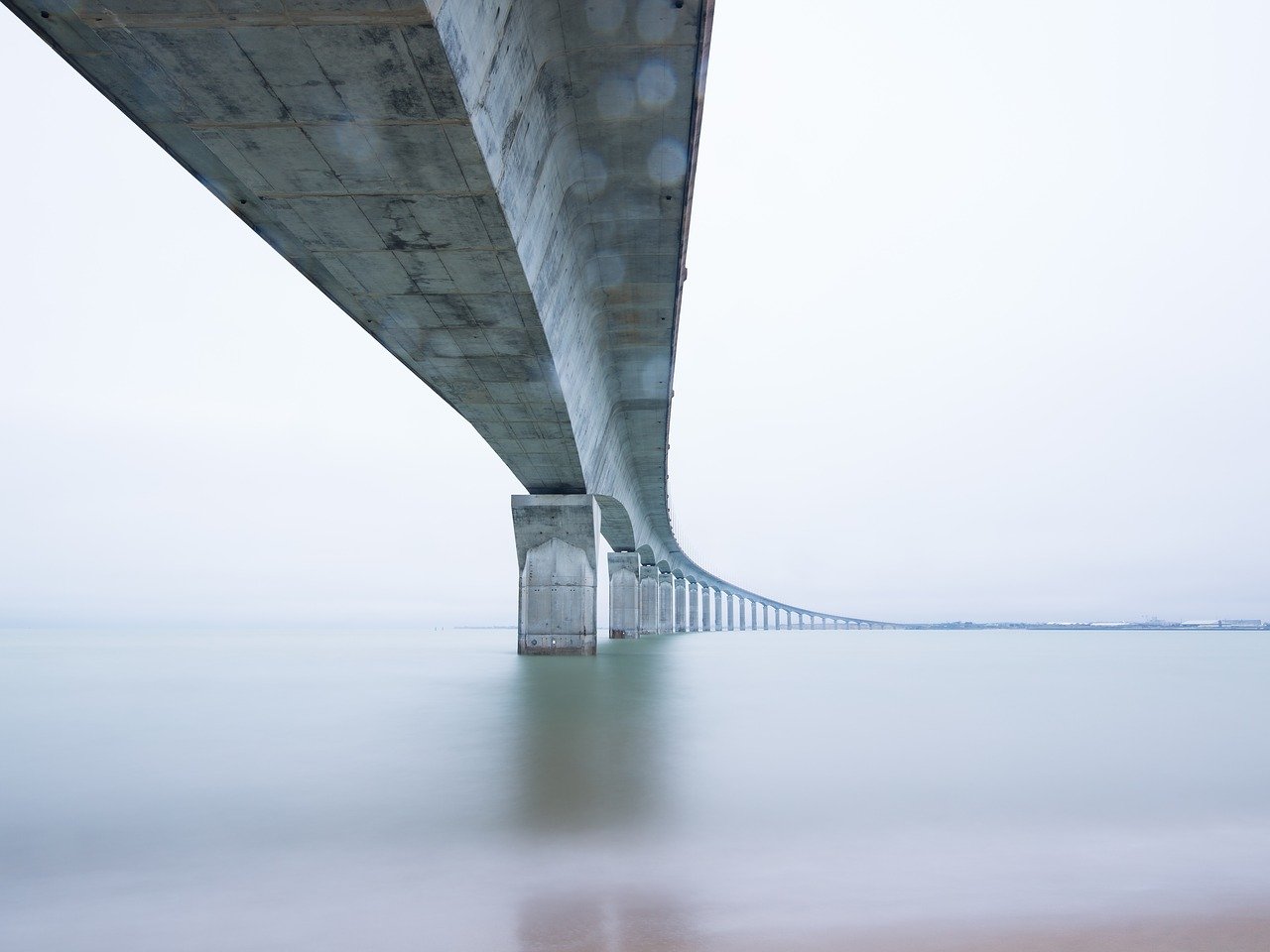Long bridges are amazing feats of engineering. Around the world, there are dozens of bridges that span longer than 3 kilometers, and many of them are found in China. However, the Middle East is home to several impressive causeways as well as suspension and sea bridges.
One of the most recent bridges of note, the Sheikh Jaber Al-Ahmad Al-Sabah Causeway in Kuwait, was completed in 2019 and is the fourth longest sea bridge in the world. Saudi Arabia and Iran, among other Middle East countries, also boast impressive bridge structures.
Sheikh Jaber Al-Ahmad Al-Sabah Causeway (Kuwait)
Inaugurated in May 2019, the $3.6 billion Sheikh Jaber Al-Ahmad Al-Sabah Causeway took four years to construct and encompasses almost 49 kilometers of bridge and road work. Designed to connect Kuwait City to the $100 billion Silk City megadevelopment, the bridge is 36 kilometers from pier to pier, meaning roughly 80 percent of the bridge is over water. The causeway also includes the 12.4-kilometer Doha Link, which extends across a small bay to connect Kuwait City’s free port to the Doha area.
The bridge, which was designed by Systra, a Paris-based engineering and consulting group, was named in honor of the late 13th Emir of Kuwait in recognition of his economic development contributions to the country. It cuts what was once a 90-minute trip across more than 100 kilometers of coastal roads down to a 30-minute drive. The causeway has dual 17-meter-wide carriageways, each of which feature three traffic lanes in addition to an emergency lane and hard shoulder. It is supported by 300,000 and 600,000-square-meter artificial islands. Other features include 600 cameras to track emergency issues and traffic movement, as well as a supervisory control and data acquisition system.
The causeway, along with Silk City, is a key component of Kuwait Vision 2035, which also includes comprehensive economic reforms designed to make the country more attractive to domestic and foreign investors. Construction plans for the first phase of Silk City, which will eventually include an Olympic-sized stadium, airport, and a tower that eclipses the Burj Khalifa in Dubai, were announced in February 2019 at a cost of $86 billion.
King Fahd Causeway Bridge (Saudi Arabia/Bahrain)
Stretching more than 24 kilometers across the Persian Gulf, the 22-meter-wide King Fahd Causeway Bridge links Bahrain to Saudi Arabia through a series of five bridges supported by seven manmade islands. The project, which took more than three decades to complete, has helped strengthen bilateral relations and has had positive economic and political impacts for both countries.
The idea to connect the two nations via a bridge was formally agreed upon by King Faisal of Saudi Arabia and the Prime Minister of Bahrain during the 1960s. The bridge had been a subject of discussion during a prior trip to Bahrain by King Saud of Saudi Arabia in the 1950s. The actual design-build plan for the causeway was developed from 1968 to 1982. The King Fahd Causeway Bridge was inaugurated in November 1986 following four years of construction.
Jamal Abdul Nasser Bridge (Kuwait)
Initiated by the Ministry of Public Works of Kuwait, the Jamal Abdul Nasser Bridge opened to the public in 2017 after four years of construction. The $870 million project involved the transformation of Jamal Abdul-Nasser Street into a 20-kilometer, multi-level expressway that forms part of a larger network of roads that includes the Jahra Highway and Sheikh Jaber Al-Ahmad Al-Sabah Causeway.
In addition to seven highway lanes in each direction across separate 10- and eight-kilometer bridges, the project included the construction of nine ground level roundabouts, eight pedestrian overpasses, and three multi-level interchanges. At the time of construction, it was considered one of the largest multi-level road projects in the world.
Boubyan Island Railway Bridge (Kuwait)
In preparation for the development of Kuwait’s Silk City, the Ministry of Public Works of Kuwait initiated a 33-kilometer dual three-lane highway between the Sabbiyah northern desert region and Boubyan Island. The $380 million project also included the construction of a two-line, nine-kilometer railway bridge supported on bored piles and reinforced substructure. It was designed by YWL Engineering.
Meshginshahr Bridge (Iran)
The Meshginshahr Bridge in the northwestern Iran province of Ardabil is for pedestrian travel only, but it nonetheless stands out as the tallest suspension bridge in the Middle East at 80 meters above the Sabalan slope. It is also the world’s longest footbridge. The two-meter-wide bridge extends 365 meters across natural attractions such as the Khiav River, Meshginshahr Forest Park, and the Khyavachai Valley. Visitors frequently flock to the bridge during the spring to witness the beauty of these landscapes. In fact, the construction of the bridge was part of a larger effort to turn Meshkin Shah into a tourist destination complete with spas, hotels, and entertainment attractions.
Construction of the bridge was completed in 2015. It was designed by local engineers Mahmoud and Ali Ganjalibeyk, who took inspiration from the Vancouver Canal Bridge in Canada. The structure was built with glass, polymer, and fire-and-moisture-resistant composite materials and is strong enough to support more than 3,000 people at one time.

